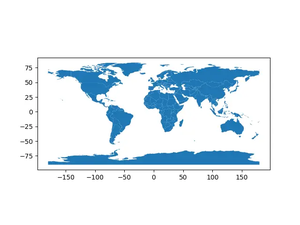Introduction
The pandas library in Python is a powerhouse for data manipulation and analysis. Among its many features, DataFrame.loc[] stands out for its ability to select data based on label information. This tutorial will guide you through understanding and utilizing loc[] with six comprehensive examples.
Preparation
Ensure you have pandas installed and imported in your Python environment:
import pandas as pd
Creating a Sample DataFrame
data = {'Name': ['John', 'Anna', 'Peter', 'Linda'],
'Age': [28, 34, 29, 32],
'City': ['New York', 'Paris', 'Berlin', 'London']}
df = pd.DataFrame(data)
Example 1: Basic Selection
Starting with the basics, you can select a single row:
print(df.loc[0])
The output will show information for the first row, indexed at 0.
Example 2: Select Multiple Rows
Selecting multiple rows by specifying a list of indices:
print(df.loc[[0, 2]])
This will output rows 0 and 2.
Example 3: Slicing Rows
You can slice rows using a colon:
print(df.loc[1:3])
This slice includes rows 1 through 3.
Example 4: Selecting Rows and Columns
More selective data access by specifying row and column labels:
print(df.loc[0, 'Name'])
print(df.loc[[1, 3], ['Name', 'City']])
Outputs will show the name of the first person and names with cities of the second and fourth persons, respectively.
Example 5: Conditional Selection
Using conditions to filter rows:
print(df.loc[df['Age'] > 30])
This command lists all persons older than 30 years.
Example 6: Setting Values
loc[] can also be used to modify data:
df.loc[0, 'Age'] = 29
print(df)
The age for the first person has been updated to 29.
Advanced Use: Combining with Other Methods
Combining loc[] with other pandas methods can unlock even more power. For instance, using loc[] with groupby() for aggregated data selection:
# Assuming 'df' is a more complex DataFrame with multiple entries per city
city_group = df.groupby('City')
print(city_group.loc[city_group['Age'].mean() > 30, 'Name'])
Note: The above might require adjustments based on real data context, as groupby().loc[] isn’t directly applicable. This shows the concept of combining loc[] with other methods.
Conclusion
The pandas.DataFrame.loc[] method is essential for precise data selection and manipulation. Through these examples, you’ve seen its versatility – from basic to more sophisticated data operations. Experiment with these techniques on your own data sets to discover the true power of pandas.
